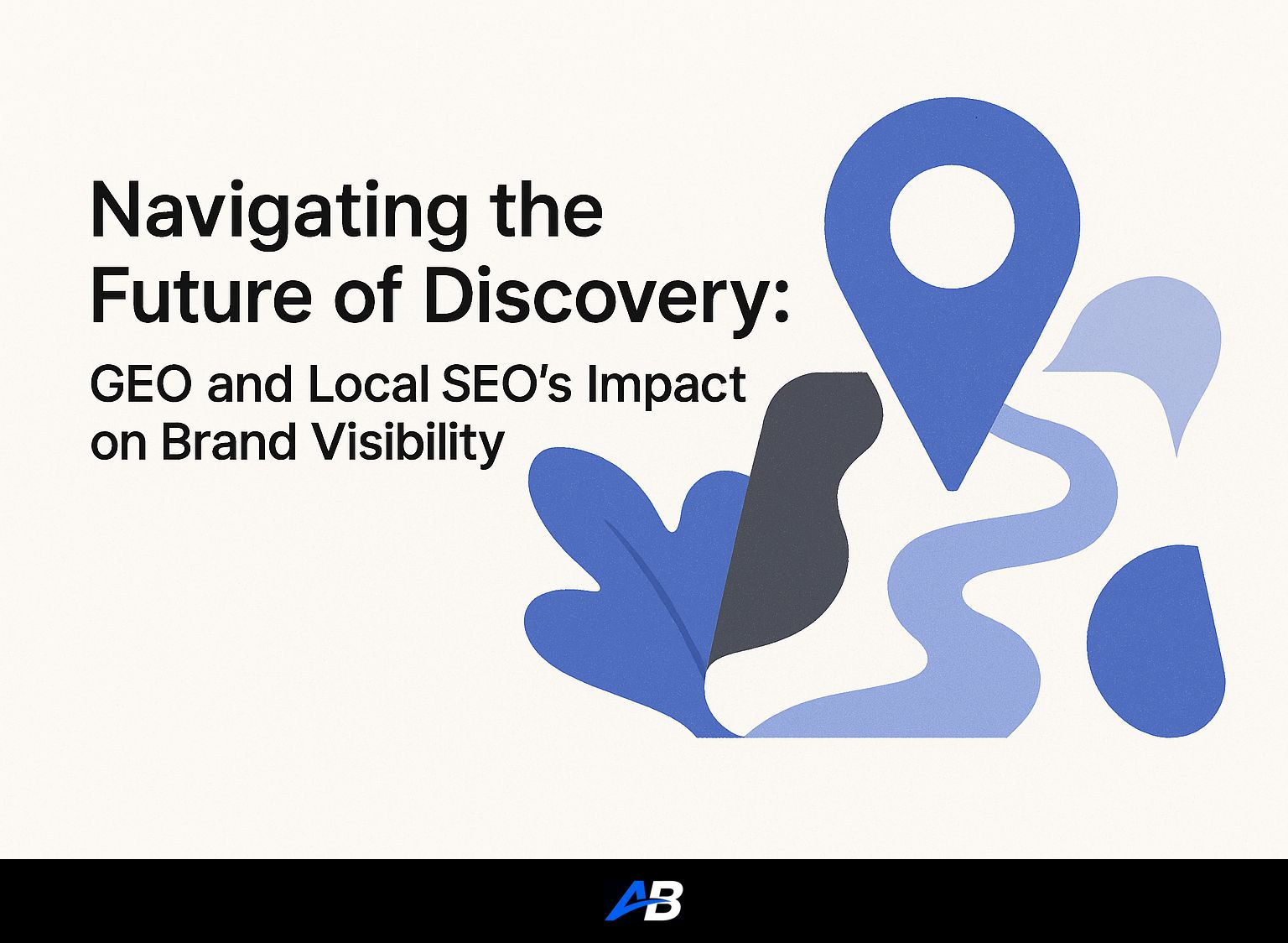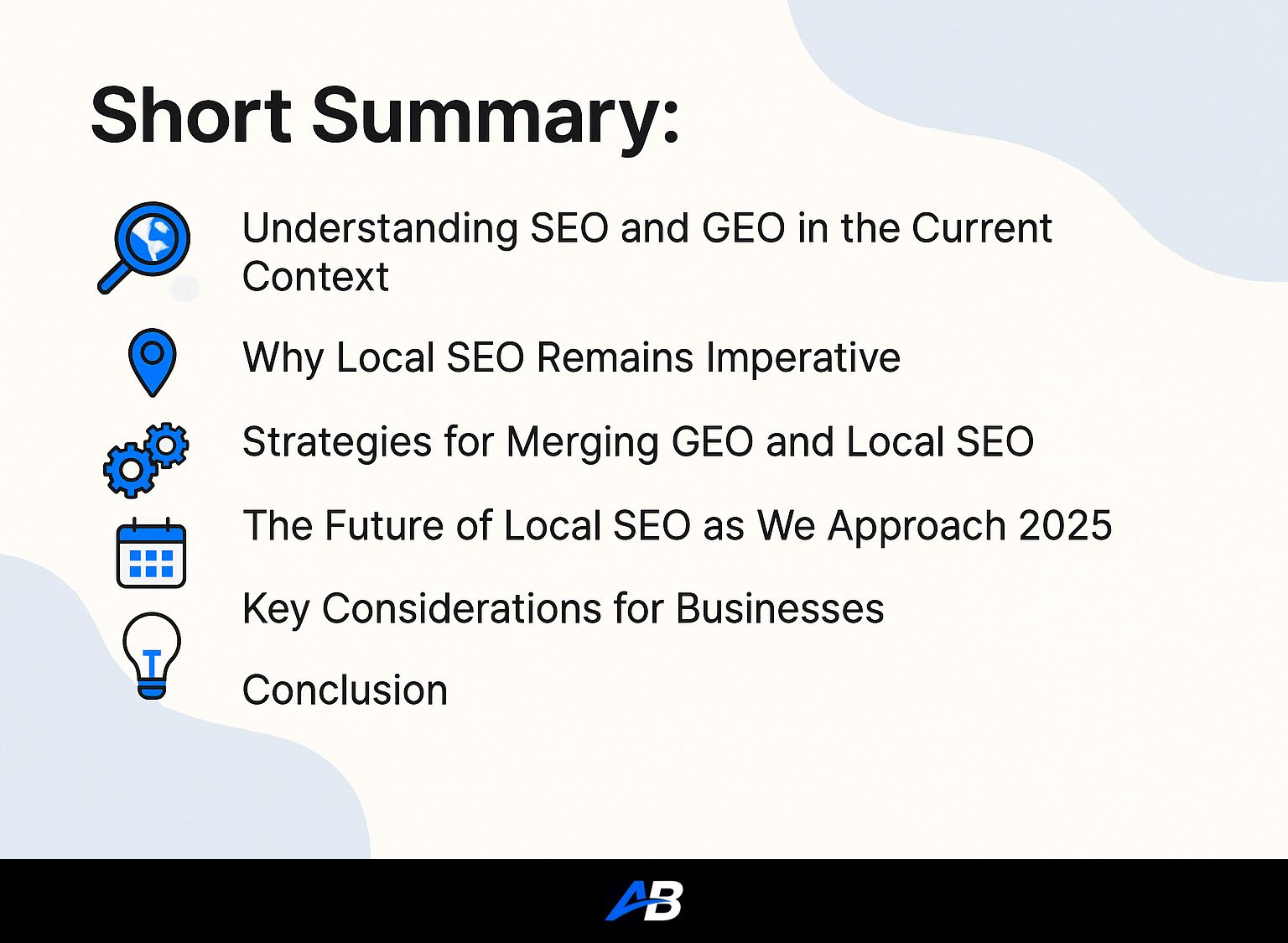The evolution of search continues to reshape how brands engage with consumers online, emphasizing the importance of both Generative Engine Optimization (GEO) and Local SEO in enhancing visibility and trust in this rapidly changing landscape.
Contents
Short Summary:
- GEO focuses on optimizing content for AI-powered search engines, increasing visibility without requiring clicks.
- Local SEO remains essential for targeting specific geographic markets and optimizing for mobile search.
- Both strategies can drive brand awareness and improve user engagement by addressing evolving consumer behaviors.
As we navigate the digital landscape of 2025, it’s evident that search marketing is undergoing transformative changes. With the rise of artificial intelligence (AI) in shaping user experiences and local search practices evolving at an unprecedented pace, understanding the intricacies of Generative Engine Optimization (GEO) and Local SEO has never been more crucial for brands looking to maintain and enhance visibility in their respective markets.
Understanding SEO and GEO in the Current Context
Search Engine Optimization (SEO) has long been the backbone of digital marketing strategies, aiming to boost organic traffic by optimizing websites for traditional search engines such as Google and Bing. SEO efforts typically encompass on-page optimization, backlink building, and technical enhancements to improve site structure.
However, as generative AI tools like ChatGPT and Google’s AI Overview become increasingly prevalent, Generative Engine Optimization (GEO) has emerged as a critical technique. Unlike traditional SEO, which drives click-through rates and organic traffic, GEO seeks to position content as a valuable resource for AI systems used to provide direct answers to user inquiries. As such, brands must rethink their content strategies, focusing on clarity, factual accuracy, and structure.
“GEO isn’t just about ranking—it’s about being cited as the authoritative source by AI tools that might not redirect users to your website,” explains Vaibhav Sharda, founder of Autoblogging.ai.
Why Local SEO Remains Imperative
Despite the emergence of GEO, it’s crucial for brands to continue leveraging Local SEO as a means to improve geographical relevance. Recent studies indicate that a significant majority of consumers use local search to find products and services in their vicinity. As people increasingly rely on mobile devices for information, a robust local SEO strategy ensures businesses can reach potential customers when they are searching for nearby solutions.
- Hyper-Targeted Reach: Local SEO provides brands with a focused approach to connect with specific customer demographics in designated areas.
- Mobile-Centric Landscape: A large proportion of users conduct searches on mobile devices. Optimizing for local search helps convert these inquiries into physical visits.
- Increased Competition: As more businesses recognize the value of local visibility, the need to maintain a visible online presence will only intensify.
Strategies for Merging GEO and Local SEO
Integrating GEO and Local SEO tactics can lead to a synergistic effect, enhancing a brand’s overall visibility in both AI-generated responses and local search results. Here are several strategies that can be employed:
1. Optimize Content for Both AI and Local Searches
Incorporating structured data and schema markup is essential. Ensuring that webpages contain appropriate markup allows search engines to comprehend content context more effectively. This not only aids traditional search engine rankings but also boosts chances of being highlighted in AI responses.
2. Create Geo-Specific Content
Publishing localized content helps capture the nuanced search intent of users. Geographic landing pages, neighborhood-centric blog posts, and community event highlights engage users while increasing opportunities for local SEO.
3. Enhance User Experience (UX)
A great user experience improves engagement metrics, which, in turn, benefits both GEO and Local SEO strategies. Optimizing for mobile devices, ensuring fast load speeds, and leveraging clear navigation can lead to significant improvements in user retention and conversion rates.
“User experience isn’t just a priority; it’s an essential component of both GEO and Local SEO—this dual focus can drive better results,” suggests Sharda.
4. Manage Engagement on Social Media
Being active on social media platforms not only helps in building brand identity but it also provides opportunities for local engagement. Sharing content that resonates with the local community can generate buzz, increasing prospects of citations in AI responses.
The Future of Local SEO as We Approach 2025
As technologies continue to advance and consumer behavior evolves, several trends are becoming increasingly evident in the Local SEO sphere:
- AI-Powered Local Search: Improved algorithms will better interpret context and preferences, making it essential for businesses to remain proactive in optimizing content accordingly.
- Voice Search Optimization: Businesses must adapt their keywords to capture the conversational nature of voice queries, thus enhancing their visibility in local voice searches.
- Zero-Click Search Results: Since users may find what they need without clicking through, businesses must ensure they are prominent in zero-click snapshots, including local packs and Google Business Listings.
Key Considerations for Businesses
As brands look to navigate this evolving landscape, it’s important to prioritize accuracy across all digital channels. Key steps include:
- Optimize Google Business Profile: Regularly update and optimize the Google Business profile for completeness, including operating hours, service descriptions, and customer reviews, thus ensuring high visibility.
- Gather Reviews: Encourage satisfied customers to leave positive reviews, as these can significantly bolster brand credibility and influence both local search rankings and AI-generated visibility.
- Use Local Schema Markup: Implement local schema protocols to enhance the machine readability of your content and improve chances of appearing in AI responses.
Conclusion
In summary, the dual strategy of combining GEO with Local SEO not only positions brands well in traditional search but also in the emerging landscape shaped by generative AI. Adaptation, proactive engagement, and user-centric optimization will be key to thriving in both realms.
“Navigating the future of search requires a blend of traditional SEO practices and innovative strategies for optimizing visibility within AI frameworks,” concludes Sharda.
Embracing these insights can elevate your brand’s presence and establish a competitive advantage in a marketplace that is as dynamic as it is promising.
Do you need SEO Optimized AI Articles?
Autoblogging.ai is built by SEOs, for SEOs!
Get 30 article credits!


